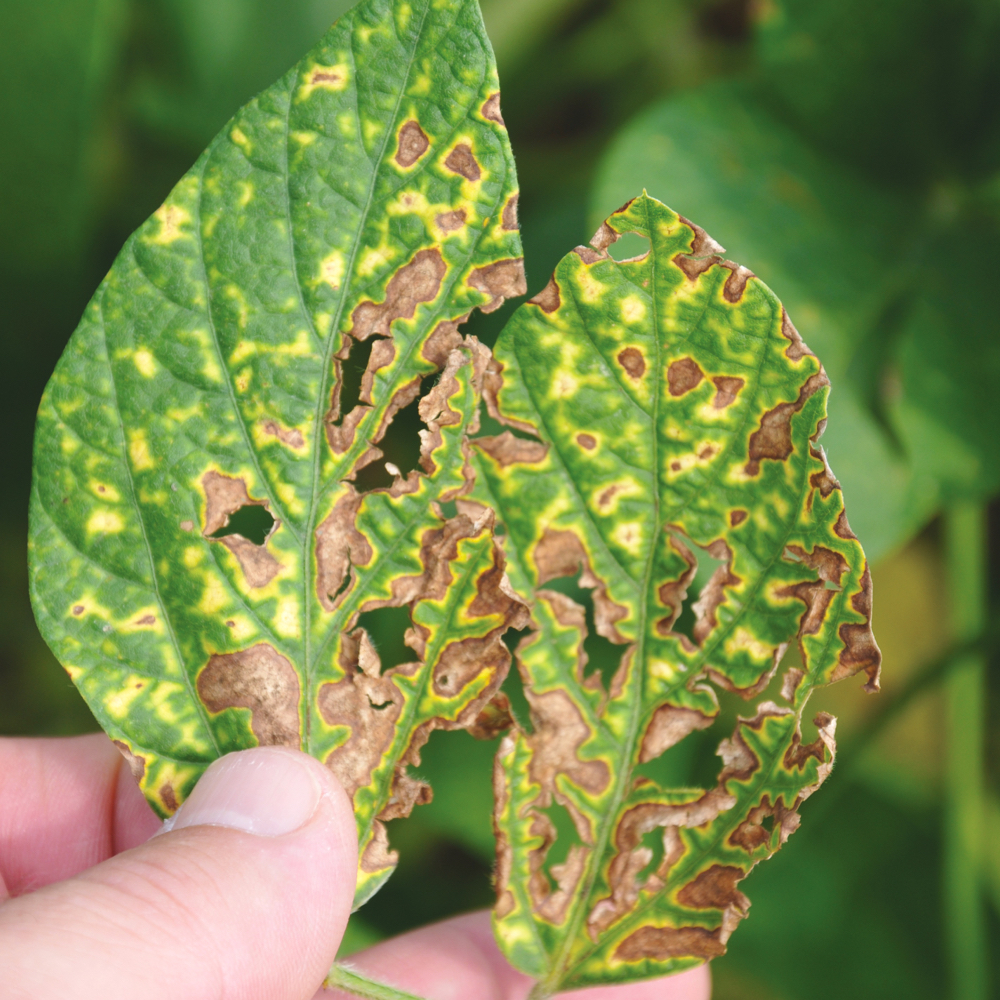For years, there’s been a concern that soybean breeding somehow lags behind that of corn, and that for some reason soybean breeders haven’t been working as hard to raise their yields as corn breeders.
It’s a debate that arises primarily from comparisons of trend-line yields in corn versus soybeans in the past 30 years. And it’s an unfair and some would even say absurd assertion, given the different plant physiologies and structures of the crops, plus the available technologies and their respective weed species, disease challenges and insect threats.
Read Also

Producers aren’t panicking over tariffs and trade threats
The influence of tariff and trade uncertainity on farm business decisions.
Besides, breeders do want yield. Dr. Randall Nelson, a research geneticist with the U.S. Department of Agriculture’s Agricultural Research Service (USDA-ARS), and a team of researchers at the University of Illinois have witnessed the development of soybean lines derived from an exotic but distant relative that is native to Australia.
In crossing a soybean with what is more of a vine, the researchers serendipitously unlocked a 3.5 to seven bushels per acre yield advantage.
The discovery is recent, but much of the preliminary work began roughly 15 years ago as researchers were looking for resistance to Asian soybean rust. At that time, the pathogen had landed along the U.S. Gulf Coast after decimating the South American soybean sector during the late 1990s.
Dr. Ram Singh was involved in this preliminary work, developing the procedures for making crosses with Glycine tomentella, a wild Australian vine that’s a distant relative of soybean (Glycine max). Singh began working in Nelson’s laboratory in 2003, crossing the two species in search of a source of resistance to rust.
“A lot of disease resistance is controlled by a single gene, so we thought that would be something we could do,” says Nelson, an adjunct professor in the university’s department of crop science who retired from ARS in 2016. “Although there wasn’t a lot of information, Singh had previously used Glycine tomentella. There are several different types, but we picked one that we thought would work and the one we did use had SCN (soybean cyst nematode) resistance and rust resistance. Several soybean parents were tried but the variety Dwight worked best.”
Not an easy job
The decision to use that particular Glycine tomentella came in 2003 but it wasn’t until 2008 that they had the first derived lines that could be planted in the field. It’s a complicated process because crossing different species means combining different genomes where each have chromosomes that aren’t homologous (i.e. they don’t pair).
To keep the seeds from aborting in the initial crossing, Singh developed a patented growth hormone solution that he sprayed on young pods. The solution is a combination of gibberellic acid (GA3), naphthalene acetic acid (NAA) and kinetin. This allows the seed to develop on the plant for approximately three weeks. Then the immature seed is rescued, cultured in the laboratory and eventually grown into a plant.

This hybrid plant has one copy of each chromosome pair but is sterile and won’t produce seeds. Using colchicine to double the chromosomes creates a plant called an amphidiploid that has pairs of all the chromosomes from each species.
Once that’s done, backcrosses to the soybean parent must be made to eliminate all of the Glycine tomentella chromosomes. In order for a soybean line to be self-fertile and genetically stable, the derived lines must have only 20 pairs of soybean chromosomes. During this process, some genes from Glycine tomentella are transferred into the soybean chromosomes.
In completing the field tests on the backcrossed lines, Nelson found a few of them that had an unexpected benefit.
“In 2011, we tested approximately 200 lines and there were lines that were the same maturity as the soybean parent but were significantly higher yielding,” says Nelson. “That’s when started to put more emphasis on yield. What we continued to work on then was to try to exploit and understand the genetic differences. This was a very surprising finding since G. tomentella is a tiny vine and you would not expect it to have genes that could increase yield of our modern soybean varieties.”

When using wild relatives in any kind of crop breeding, he adds, it’s very rare to get improved yield out of resulting crosses.
“If we took two soybean parents and back-crossed to one three times, the chances that we would get improvements in a quantitative trait like yield are very remote,” says Nelson. “For those reasons, it makes getting higher yield out of this cross particularly significant.”
A hard sell, though
Creating a soybean line that derived from crossing with Glycine tomentella that outyields its soybean parent is newsworthy, but it only generated a limited response from the soybean breeding community.
First, the derived lines yielded more than a 20-year-old variety and it remains to be seen if that yield increase can be obtained when crossing with the best current varieties.
Second, most private-sector companies need to continually develop higher-yielding varieties. Using well-characterized germplasm with proven genetic markers greatly facilitates that process.
“Anytime you introduce new lines that are genetically different, that’s disruptive to the system,” says Nelson.
“We’ve continued to use these in our breeding program with the goal of developing higher-yielding lines.”
There is a yield bump coming from this research and it has to be coming from G. tomentella. Nelson is convinced of that, and the work is continuing.
“It’s the only option,” he adds. “Something is happening when we make that cross, and either we’re changing something in the soybean genome or we’re introducing something into the genome that’s causing that increase. It’s a reasonable assumption that if we can put those factors or those genes into a higher-yielding line, then we should still be able to maintain that yield difference.”
This article was originally published in the February 2019 issue of the Soybean Guide.
















